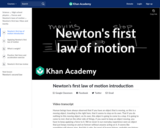
Basic primer on Newton's First Law of motion. Created by Sal Khan.
- Subject:
- Physical Science
- Physics
- Material Type:
- Lesson
- Provider:
- Khan Academy
- Provider Set:
- Khan Academy
- Author:
- Sal Khan
- Date Added:
- 07/15/2021

Basic primer on Newton's First Law of motion. Created by Sal Khan.
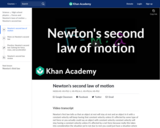
Newton's second law of motion is F = ma, or force is equal to mass times acceleration. Learn how to use the formula to calculate acceleration. Created by Sal Khan.
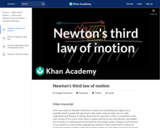
Every action has an equal and opposite reaction. Created by Sal Khan.

In this video segment adapted from NOVA scienceNOW, MIT engineer Dava Newman is working to replace today's bulky, inflated space suits with a radical, sleek design that may one day allow astronauts to walk easily on Mars.

Play with a 1D or 2D system of coupled mass-spring oscillators. Vary the number of masses, set the initial conditions, and watch the system evolve. See the spectrum of normal modes for arbitrary motion. See longitudinal or transverse modes in the 1D system.

Students expand upon their understanding of simple machines with an introduction to compound machines. A compound machine a combination of two or more simple machines can affect work more than its individual components. Engineers who design compound machines aim to benefit society by lessening the amount of work that people exert for even common household tasks. This lesson encourages students to critically think about machine inventions and their role in our lives.
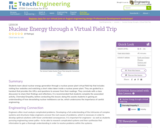
Students learn about nuclear energy generation through a nuclear power plant virtual field trip that includes visiting four websites and watching a short video taken inside a nuclear power plant. They are guided by a handout that provides the URLs and questions to answer from their readings. They conclude with a class discussion to share their findings and reflections. It is recommended that students complete the associated activity, Chernobyl Empathy, before conducting this lesson; doing this assists students in gaining an understanding of how devastating nuclear meltdowns can be, which underscores the importance of careful engineering.
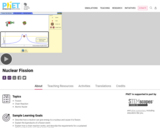
Start a chain reaction, or introduce non-radioactive isotopes to prevent one. Control energy production in a nuclear reactor! (Previously part of the Nuclear Physics simulation - now there are separate Alpha Decay and Nuclear Fission sims.)
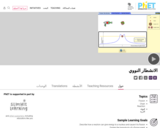
Start a chain reaction, or introduce non-radioactive isotopes to prevent one. Control energy production in a nuclear reactor! (Previously part of the Nuclear Physics simulation - now there are separate Alpha Decay and Nuclear Fission sims.)

This video segment adapted from FRONTLINE looks at nuclear fission as an energy source that can be used to generate electricity.
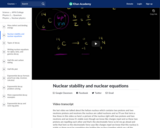
Using the ratio of neutrons to protons to figure out of a nucleus will be stable or radioactive. Created by Jay.

Object Image and Focal Distance Relationship (Proof of Formula). Created by Sal Khan.

Object Image Height and Distance Relationship. Created by Sal Khan.

This video segment produced for Teachers' Domain features a time-lapse video of clouds forming, changing, and moving across the sky.

This brief video segment produced for Teachers' Domain features time-lapse video of a sunrise and a sunset.

This video segment adapted from Shedding Light on Science illustrates how light changes speed, and thus direction, in a process known as refraction.

In this extension to the Ohm's Law I activity, students observe just how much time it takes to use up the "juice" in a battery, and if it is better to use batteries in series or parallel. This extension is suitable as a teacher demonstration and may be started before students begin work on the Ohm's Law I activity.

See how the equation form of Ohm's law relates to a simple circuit. Adjust the voltage and resistance, and see the current change according to Ohm's law. The sizes of the symbols in the equation change to match the circuit diagram.
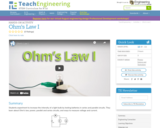
Students work to increase the intensity of a light bulb by testing batteries in series and parallel circuits. They learn about Ohm's law, power, parallel and series circuits, and ways to measure voltage and current.

This video segment adapted from NOVA follows the clean-up effort after the 1989 Exxon Valdez oil spill off the coast of Alaska. Also featured is a marsh where an oil spill occurred 20 years earlier; analysis suggests that environmental damage may last for decades.